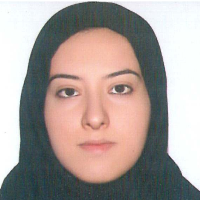Narrative stylistics (Narrative style of Hallaj's Tales Based on Simpson's Theory)
This study aims to examine the elements of stylistics in three stories. They include three poetical narratives by ʿAṭṭār in mystical genre pivoting around the character of Ḥallāj. The main research question of are: a) According to which stylistic mechanisms of narrative are the narrative-stylistic elements explained? And b) How are these elements reflected in the narrative discourse? This study hypothesis check the components of Simpson's narrative discourse to determine the stylistic features. Therefore, analysis of the texture of these narratives showed that in total, material processes with 16 applications had more performance than verbal process with 3 cases, mental process with 13 cases and behavioral process with 1 case. The research uses library method for collecting data and is analytical in nature, employing the methodology proposed by Simpson in his Stylistics approach. The results indicate the extent of characters’ collaboration by analysing the processes. In terms of point of view on the temporal plane, there is no specific time since all three narratives revolve around Ḥallāj. The descriptive pause is another example of this point of view and narrative time in the stories is longer than story-time. In the second story, however, the narrative is denser and more concise. An example of a point of view on the temporal plane can be seen in the three discourses of narration using "the use of past verbs", "descriptive pause" and "narrative time" in two narratives, and the narrative of “ tashte khakestar va amadane ashegh" is rejected. Naturally, from the spatial point of view, referring to space is not pertinent because it the prestige of Ḥallāj which is the focus of the author. All three narrative discourses confirm Hallaj's high position on psychological plane . The point of view is the third person in all three stories. In the first and third stories, the third person perspective is reflective, and in the second story, the third person perspective is prominent. Modality has some features in narratives of Ḥallāj: since the narrator narrates Ḥallāj’s emotions and the Lover’s character by direct speech, it has a positive shading. This may be explained using Fowler-Uspensky model. In terms of idiolect, the words uttered as the Lover’s reaction to see the Beloved’s (i.e. Ḥallāj’s) ash and finding a trace of the latter are in line with the mystical context of the story. All three stories of Ḥallāj can be discussed in view of Labov’s ‘textual structure’. Therefore, in future research, it is possible to examine the textual structure of the elements of this model in the narrative context by examining the structure of the text in other anecdotes of mystical poetry and consider the anecdotes related to elders. The results of this study showed that in almost these three stories, the result , the solution and the terminal phase are the same, and the reason is Attar's advice, which replaces any kind of analysis. With regard to intertextuality, two stories ‘Ḥallāj in the gallows’ (Ḥallāj bar sar-i dār) and ‘Ḥallāj decapitated in sleep’ (Ḥallāj bā sar-i burida) are referred to in other texts. The results of this study clearly show that the study of narrative stylistics and the application of its components have mechanisms that are suitable for analyzing different levels of narrative discourse context. In addition, this study provided an understanding of the style of Hallaj's narratives that had not been previously explored.
- حق عضویت دریافتی صرف حمایت از نشریات عضو و نگهداری، تکمیل و توسعه مگیران میشود.
- پرداخت حق اشتراک و دانلود مقالات اجازه بازنشر آن در سایر رسانههای چاپی و دیجیتال را به کاربر نمیدهد.




